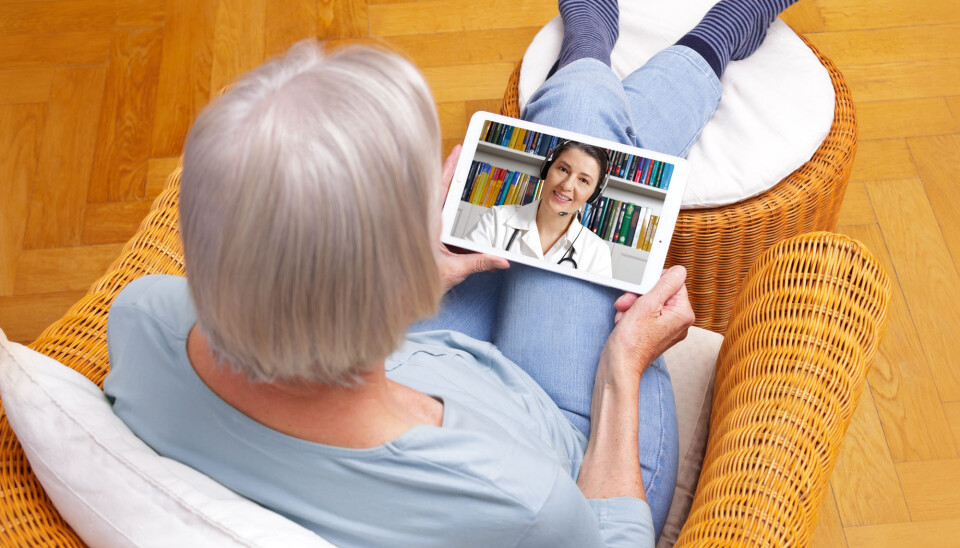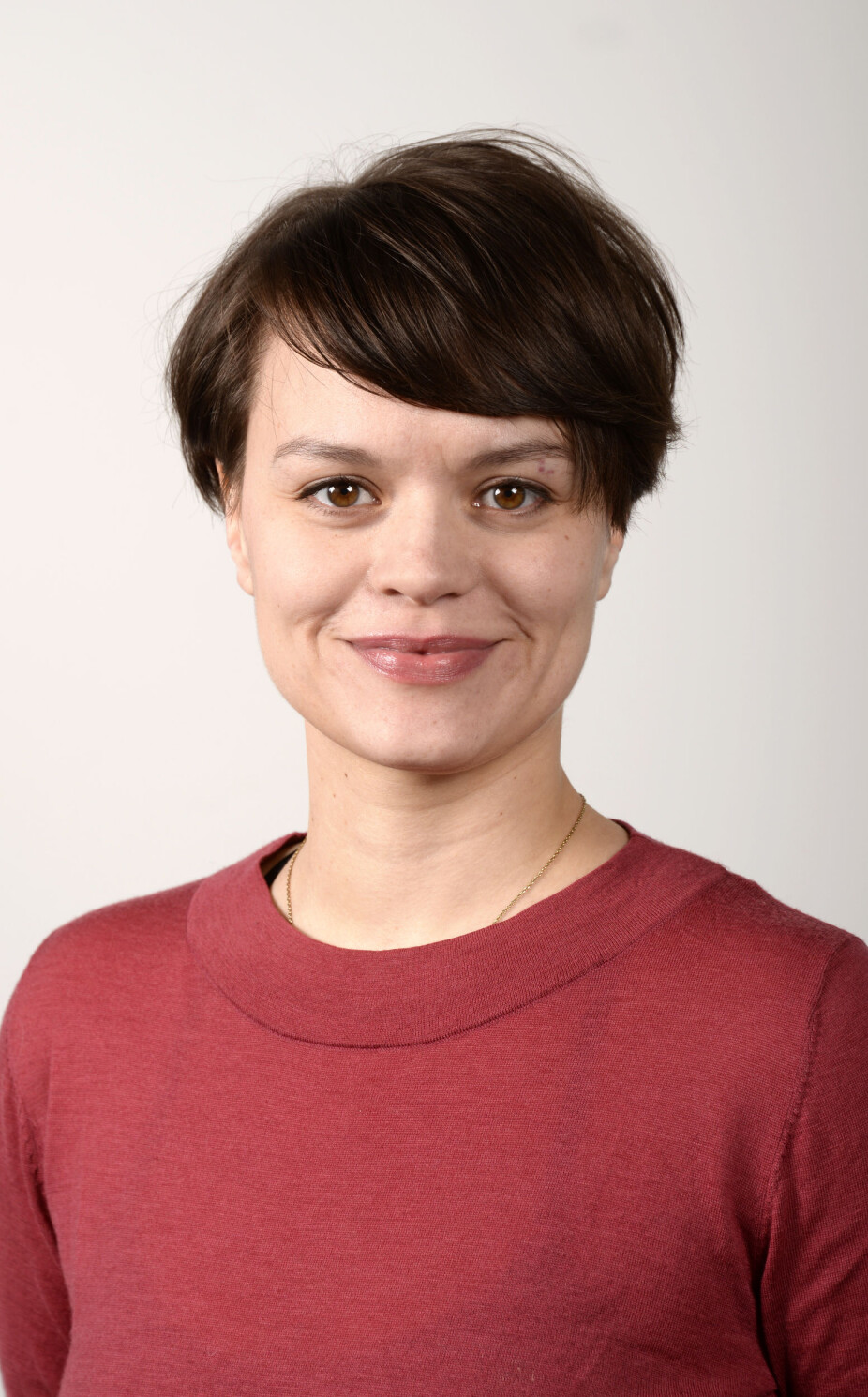This article was produced and financed by Norwegian centre for E-health research - read more

Coronavirus made the GP go digital
Before Norway’s corona lock-down, inhabitants could communicate digitally with 1400 of the ountry’s 5,000 GPs. Today, three months after, 4800 GPs offer digital services. What might the consequences be of this sudden acceleration of digitalisation?
Video and text-based consultations make it easier to get in touch with your GP. This is especially true for those who are confident technology users.
Research findings from the Norwegian Centre for E-health Research show that urban women with higher education use digital medical services the most. Other researchers have found that in Denmark, it is actually the 80-year-olds who are in nursing homes, who use text-based consultation the most, while in Sweden it is parents of toddlers and young people who top the statistics.
Some research on video at the GP
"There is little research on digital communication with the GP, and especially little on video with the GP", says project manager Eli Kristiansen at the Norwegian Centre for E-health Research.
She is about to start a PhD and will study text- and video-based e-consultation in the GP offices. The study is divided into three parts: effects, benefits and experiences from the use of the health system, the GP and the patients.
The research that exists on using video in the health care system is often done in hospitals, in trials and on specific patient groups.
Digital follow-up can vary between the specialist health service and the GP’s office.
At the GP, it is the citizens themselves who decide whether to take contact by video, text or physical attendance, while in the hospital, the clinicians decide which issues to solve via video.
The experience gained from GPs and patients who have already used digital communication is coloured by the fact that these are actors who have started using the service very early. This can give a skewed picture of reality.
Over- or under-consumption?
It is also not so easy to transfer research from other countries to Norwegian conditions. The gate keeper function of the Norwegian GP is special.
The Norwegian Centre for E-health Research has in recent years researched digital dialogue with the GP, a national service that contains the elements of appointment, e-prescription, e-contact and e-consultation (text-based).
By making it easier to contact the doctor, remove barriers such as time spent and long travel, there can be a higher demand for online medical services.
"Some believe that digital contact with the GP can lead to over-consumption and distorted distribution of health services. It may be that the digitally mature use the health service more than those who do not master the technology. On the other hand, we cannot maintain barriers to seek doctor’s services just to try to regulate this", says Kristiansen.
She explains that difficult access to medical services can lead to insecurity and under-treatment.
"We can also hope that the digital services allow doctors to spend more time on difficult issues, in patients who prefer a physical meeting."

Benefits for patients
Patients want a more accessible GP, but studies show that not everyone will use e-consultation. Using medical services online means that the patient spends less time and money traveling to the GP.
"For society, this is by far the biggest financial gain", says Kristiansen.
For patients however, the traveling and time spent might feel worth it.
"One study showed that patients think it may be a long time to wait a few days for answers in text-based e-consultation. They would rather use the actual time it takes to travel to the doctor for physical consultation. Then they get the answer right away."
Patients are also concerned about safety. They wonder who can read the email they send and whether it is safe to send a message to the doctor. For the physician, it is important to know if the patient is in a safe environment when sharing sensitive information. Could manipulative family members be present?
Doctors save time and get info
"The impression we have so far is that the GP saves time on video consultation. Patients are more precise in their communication and the doctor does not need to spend time fetching them in the waiting room", says Kristiansen.
"The consultation becomes more accurate when patients report symptoms in advance, because the patient has thought through their symptoms. If the GP has looked at these before the meeting, she will also be more prepared", she says.
She wants to take a closer look at what happens when the service is used by even more patients. Maybe the consultations will take longer then.
On top of the rest
In both the hospitals and the GP’s offices, it can be difficult to get technical devices and channels to work well. The tools come on top of an already squeezed everyday life. Organizationally, it may be difficult to use a new channel for patients.
"Our research showed that when text consultations came in addition to physical meetings, and no time was set aside for these, it could create stress in the afternoons and between other consultations for the general practitioner", Kristiansen says.
Know little about safety
The research does not provide a clear answer to the effects that digital communication has on patient safety.
"We do not know enough about the security of consultations over the Internet. Treatment may be delayed because the patient still must physically meet, or it may be mistreatment because the video meeting gave the doctor the wrong picture of the condition", Kristiansen says.
She further asks if we should develop guidelines for what diagnoses can be made over video, or whether it should be up to each individual doctor. Studies have shown that mental health issues, skin problems and respiratory and urinary tract infections are a good fit for an e-consultation.
What happens after the corona crisis?
"The doctors have invested in equipment, it's already a big step. It will be interesting to look at the lessons learned in this stressful situation. Are the doctors happy? What do the patients think? When the situation normalises again, how much contact is made on video or text? ? We just have to keep up", Eli Kristiansen concludes.


































